An estimated 459,300 people in Texas over age 65 have Alzheimer’s, according to estimates released by the Alzheimer’s Association in 2023.
Alzheimer's disease afflicts an estimated 6.7 million Americans, and that number is only growing. Medical professionals believe the volume of diagnoses could double by 2060 if there isn't a breakthrough in prevention—or a cure.
Recommended Videos
For the first time, the Alzheimer's Association released estimates on Alzheimer's prevalence in each state and county. Researchers hope these figures will help regional public health officials better treat Alzheimer's patients, develop localized care plans, and budget for care—particularly as new treatments come at a cost.
Alzheimer's is the most common form of dementia and is among the top 10 causes of death in the U.S. These deaths are increasing as fatality rates from other health-related causes, including heart disease and stroke, are on the decline. With Alzheimer's, the brain shrinks, brain cells die, and peoples' memory and language centers fail. As the disease advances, the loss of brain function leads to dehydration, malnutrition, infection, and ultimately death.
Developing a cure or effective treatment has been slow, as medical professionals still don't know what causes Alzheimer's. But earlier this year, the Food and Drug Administration fully greenlit the first drug proven to effectively treat the disease: lecanemab (sold under the brand name Leqembi), created by Eisai Inc. and Biogen. Earlier treatments only addressed symptoms of Alzheimer's, while lecanemab treats the early stages of the disease itself and slows its progression.
The drug costs $26,500 annually and is partially covered by Medicare if a patient's medical team participates in a registry to track the drug's outcomes. Those high costs could keep the treatment out of reach for low-income Americans, who already have higher odds of developing Alzheimer's, studies have shown.
Nearly all Alzheimer's patients are on government insurance, and estimates show that Medicare could spend $2 billion to $5 billion annually on lecanemab and related care. That pales in comparison to the $345 billion that Alzheimer's and other dementias cost in 2023, including nursing home stays, symptom management medications, and other care for those with the disease. Without medical advancements, the Alzheimer's Association expects those costs could rise to nearly $1 trillion by 2050.
If lecanemab and similar drugs can slow progression in even half of mild Alzheimer's patients, one study from the University of Chicago estimates Americans would save $212 billion to over $1 trillion in care-related costs over the next decade.
Having a treatment to slow the progression of Alzheimer's also creates more urgency to diagnose the disease sooner to retain more brain function. Warning signs for the disease include disruptive memory loss, difficulty with familiar tasks, worsening judgment, and changes in mood and personality.
The U.S. has a shortage of specialists in elder and memory-related medicine and nurses providing care at nursing homes and assisted-living facilities. In regions with high rates of Alzheimer's, these shortages could be catastrophic within the current models of care.
Stacker mapped states by the share of the population over age 65 that is estimated to have Alzheimer's disease, using data released by the Alzheimer's Association in July 2023. As a part of the national analysis, Stacker also took a closer look at Texas and ranked the counties within it by their estimated Alzheimer's prevalence.
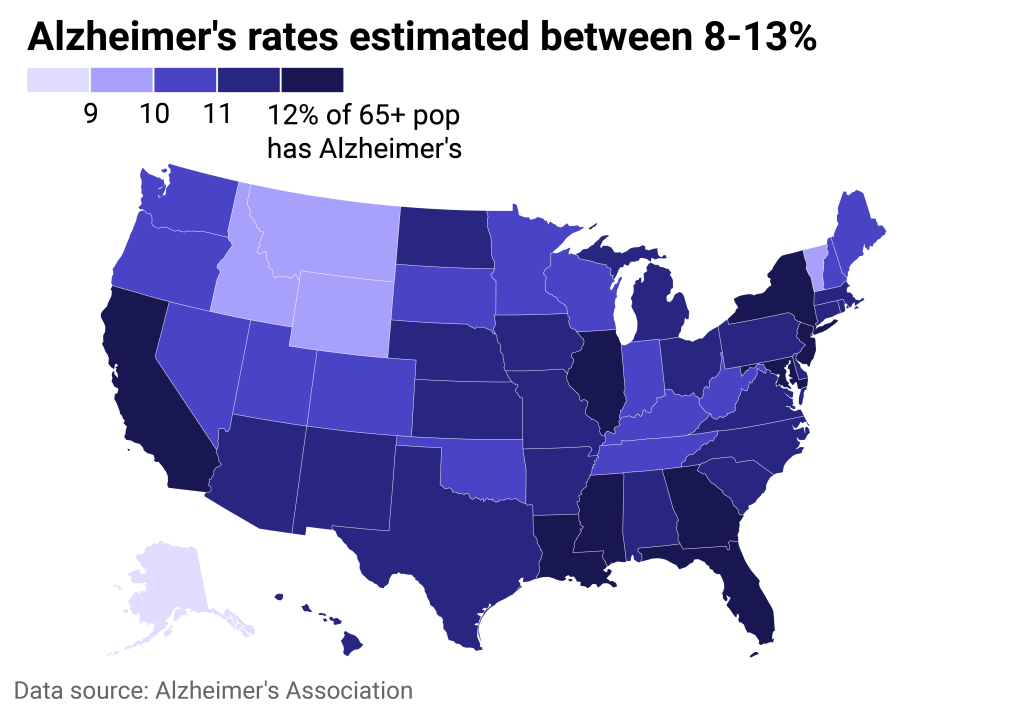
Alzheimer's rates by state
State and detailed county-level estimates show vast disparities in the prevalence of Alzheimer's disease based on racial and socioeconomic factors. Older Americans, women, Black and Hispanic Americans, and those with lower education levels are at higher risk for developing Alzheimer's dementia, according to data from the Chicago Health and Aging Project, on which these estimates were based.
The East and Southeast regions of the U.S. were estimated to have the highest prevalence of Alzheimer's, particularly Maryland, New York, Florida, Mississippi, and Louisiana. In Maryland, nearly 30% of residents are Black, and a slightly higher share of the population is 85 and older compared to national numbers—substantial risk factors that earn it the #1 spot.
In addition to a high prevalence of the disease, Mississippi has the highest Alzheimer's mortality rate, largely due to having the worst-quality health care system in the country, Time reported.
Some of the most afflicted counties are home to Black and Hispanic populations in the South, low-income populations in Appalachia, and older adults in Florida, according to Time. Other studies have found that people in rural areas tend to be underdiagnosed or diagnosed in later stages of dementia, delaying or preventing potential treatments.
Read on to see where in Texas has the highest prevalence of Alzheimer's, ranked by the share of the 65 and over population estimated to have the disease. Initial ties were broken by the number of people estimated to have Alzheimer's, but some ties may remain.

#50. Hall County
- Share of 65+ population with Alzheimer's: 13.0% - Number of 65+ population with Alzheimer's: 100 people *These are estimates; actual values have a 95% likelihood of being within 0.9 percentage points of the estimate.
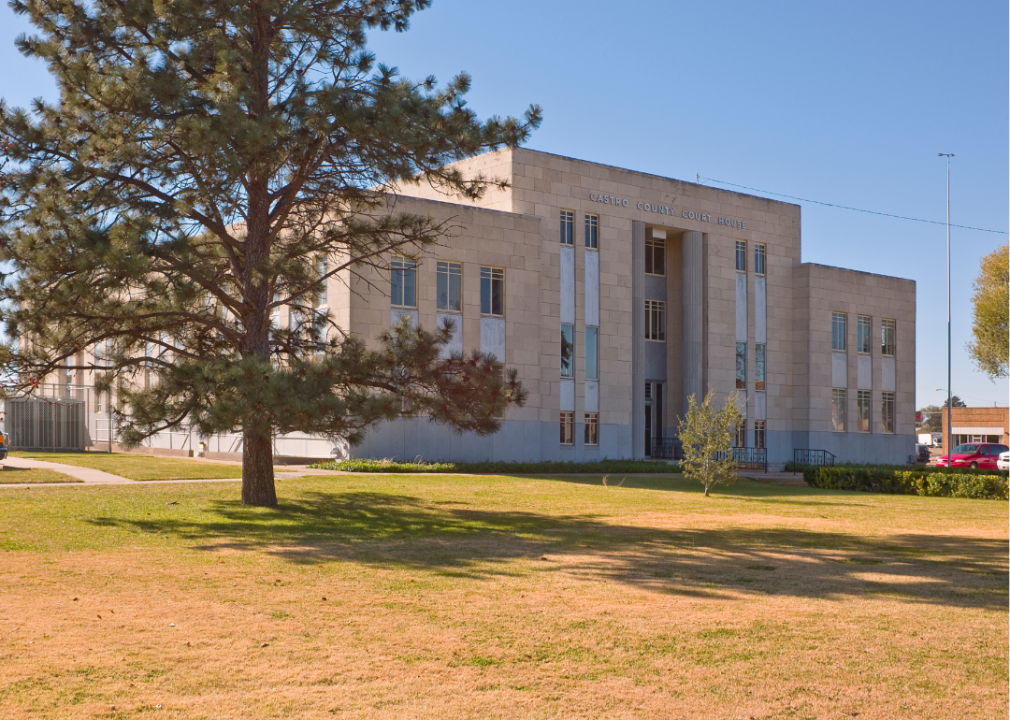
#48. Castro County (tie)
- Share of 65+ population with Alzheimer's: 13.0% - Number of 65+ population with Alzheimer's: 200 people *These are estimates; actual values have a 95% likelihood of being within 1.3 percentage points of the estimate.
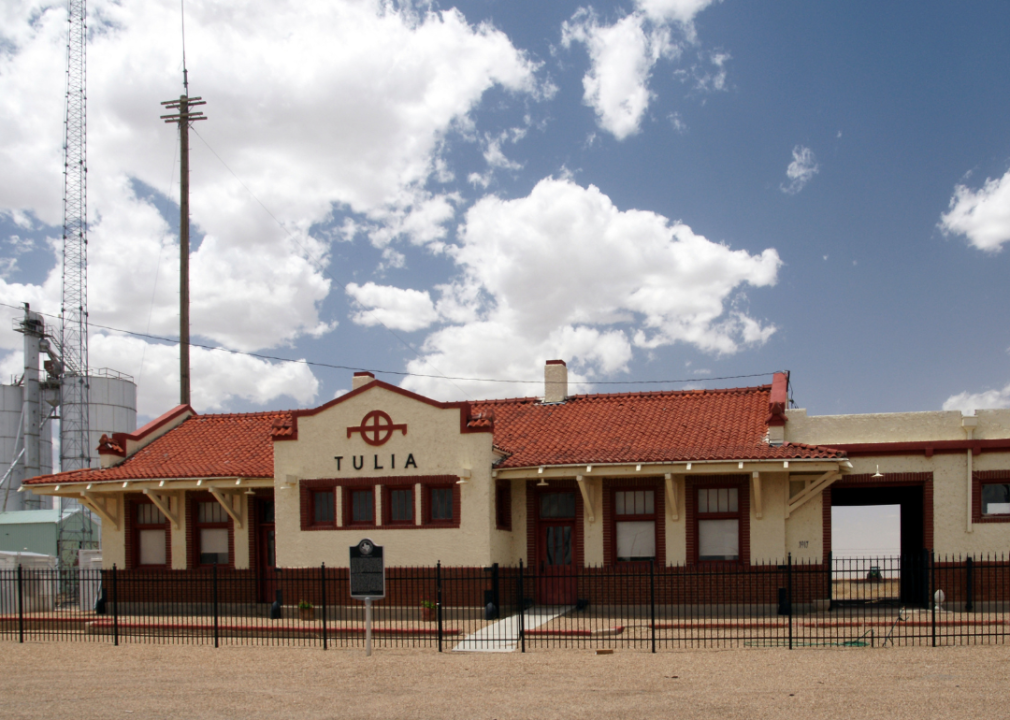
#48. Swisher County (tie)
- Share of 65+ population with Alzheimer's: 13.0% - Number of 65+ population with Alzheimer's: 200 people *These are estimates; actual values have a 95% likelihood of being within 1.1 percentage points of the estimate.
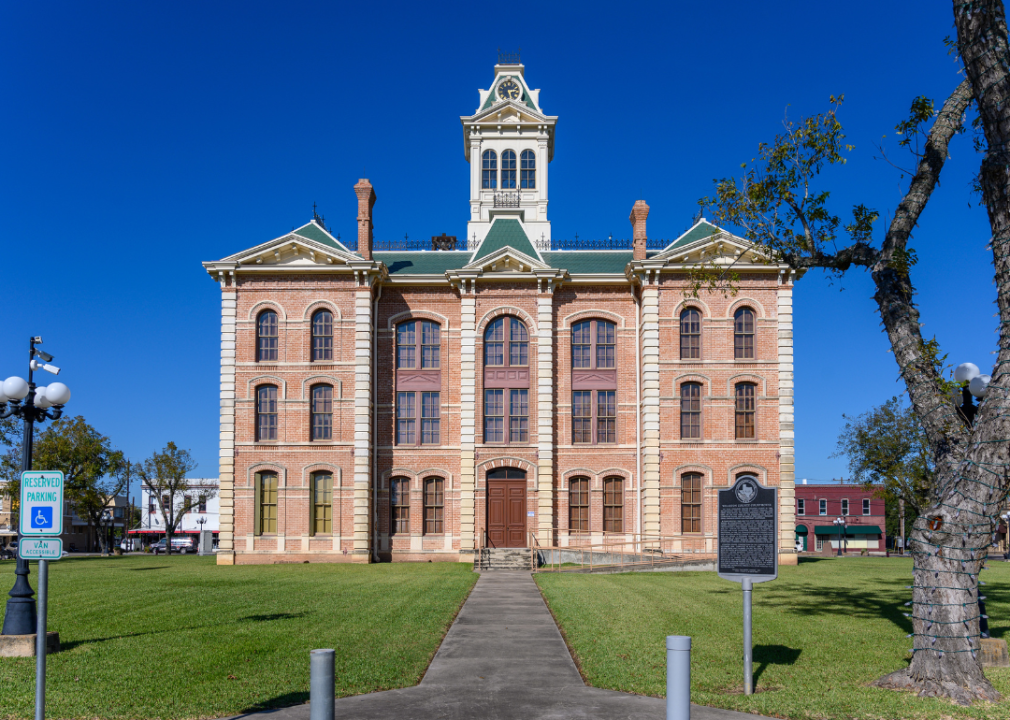
#47. Wharton County
- Share of 65+ population with Alzheimer's: 13.0% - Number of 65+ population with Alzheimer's: 1,000 people *These are estimates; actual values have a 95% likelihood of being within 1.0 percentage points—or 50 people—of the estimate.

#46. Bexar County
- Share of 65+ population with Alzheimer's: 13.0% - Number of 65+ population with Alzheimer's: 33,400 people *These are estimates; actual values have a 95% likelihood of being within 1.4 percentage points—or 3,600 people—of the estimate.

#45. Crane County
- Share of 65+ population with Alzheimer's: 13.1% - Number of 65+ population with Alzheimer's: 100 people *These are estimates; actual values have a 95% likelihood of being within 1.3 percentage points of the estimate.

#43. Karnes County (tie)
- Share of 65+ population with Alzheimer's: 13.1% - Number of 65+ population with Alzheimer's: 300 people *These are estimates; actual values have a 95% likelihood of being within 1.3 percentage points of the estimate.
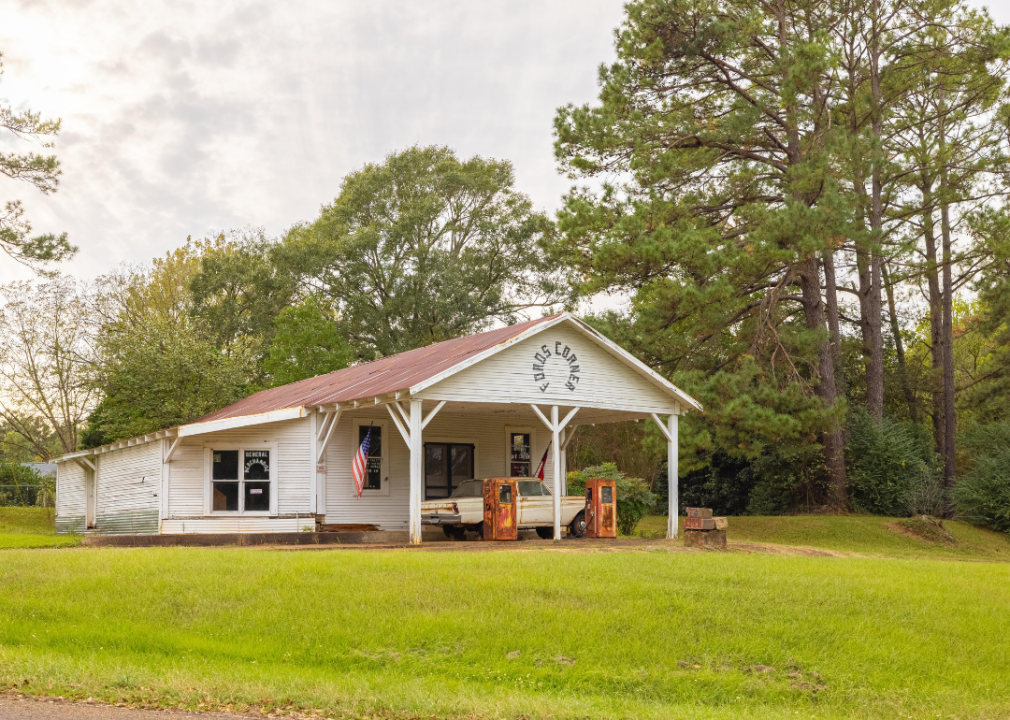
#43. San Augustine County (tie)
- Share of 65+ population with Alzheimer's: 13.1% - Number of 65+ population with Alzheimer's: 300 people *These are estimates; actual values have a 95% likelihood of being within 0.6 percentage points of the estimate.

#42. Knox County
- Share of 65+ population with Alzheimer's: 13.2% - Number of 65+ population with Alzheimer's: 100 people *These are estimates; actual values have a 95% likelihood of being within 0.9 percentage points of the estimate.

#41. Deaf Smith County
- Share of 65+ population with Alzheimer's: 13.2% - Number of 65+ population with Alzheimer's: 300 people *These are estimates; actual values have a 95% likelihood of being within 1.3 percentage points—or 50 people—of the estimate.
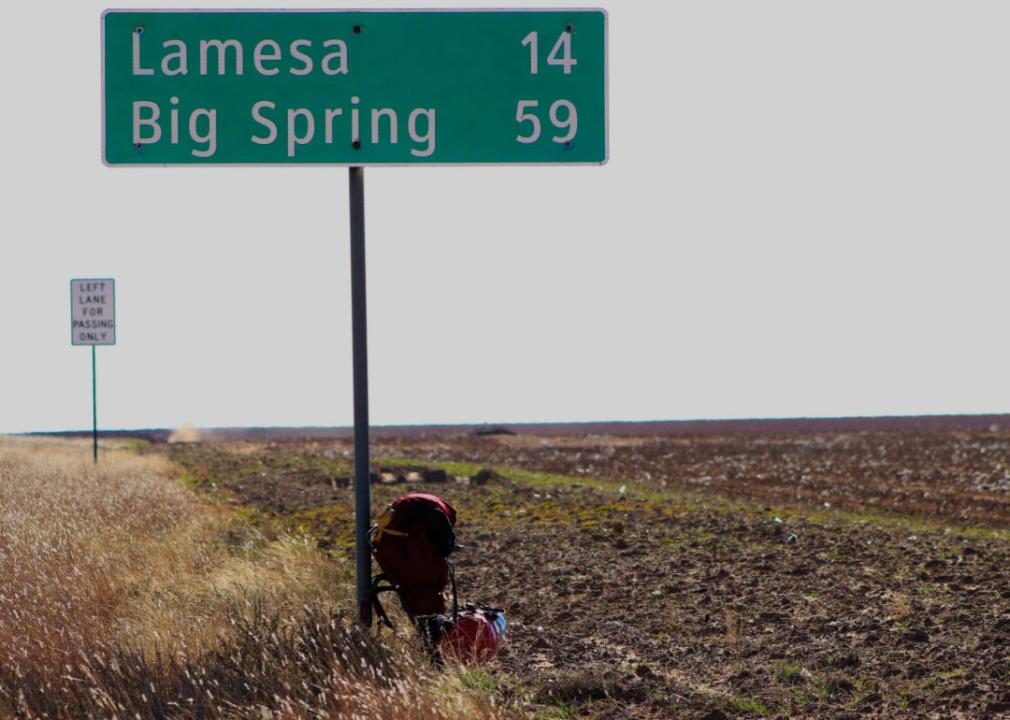
#40. Dawson County
- Share of 65+ population with Alzheimer's: 13.3% - Number of 65+ population with Alzheimer's: 300 people *These are estimates; actual values have a 95% likelihood of being within 1.3 percentage points—or 50 people—of the estimate.

#39. Nueces County
- Share of 65+ population with Alzheimer's: 13.2% - Number of 65+ population with Alzheimer's: 7,400 people *These are estimates; actual values have a 95% likelihood of being within 1.5 percentage points—or 850 people—of the estimate.

#38. Floyd County
- Share of 65+ population with Alzheimer's: 13.4% - Number of 65+ population with Alzheimer's: 200 people *These are estimates; actual values have a 95% likelihood of being within 1.2 percentage points—or 50 people—of the estimate.
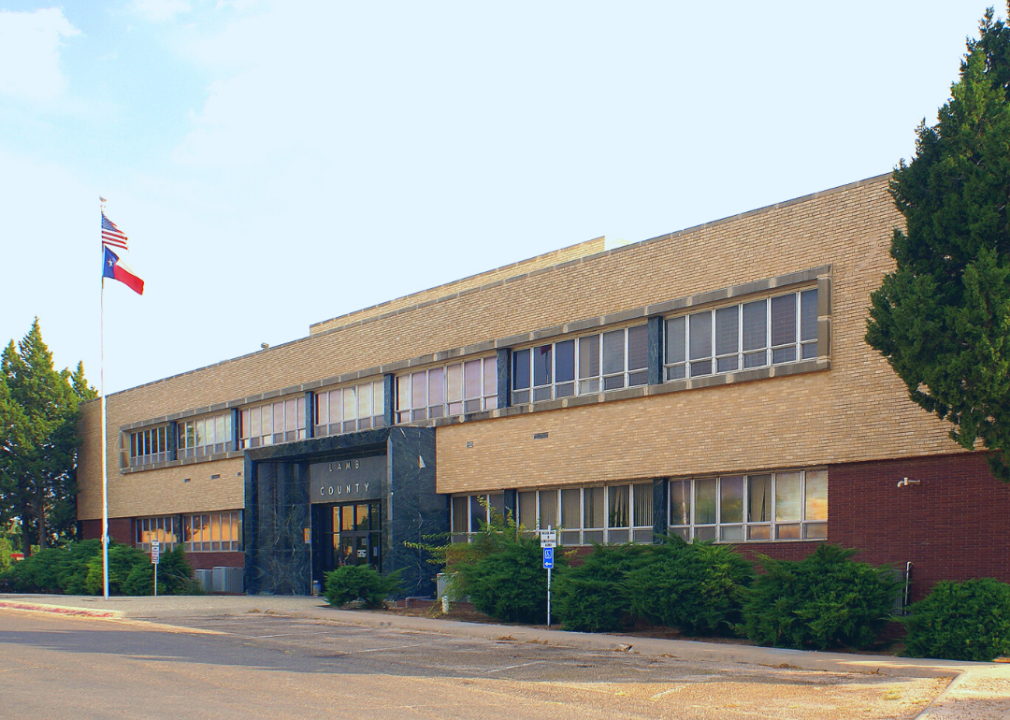
#36. Lamb County (tie)
- Share of 65+ population with Alzheimer's: 13.4% - Number of 65+ population with Alzheimer's: 300 people *These are estimates; actual values have a 95% likelihood of being within 1.2 percentage points of the estimate.
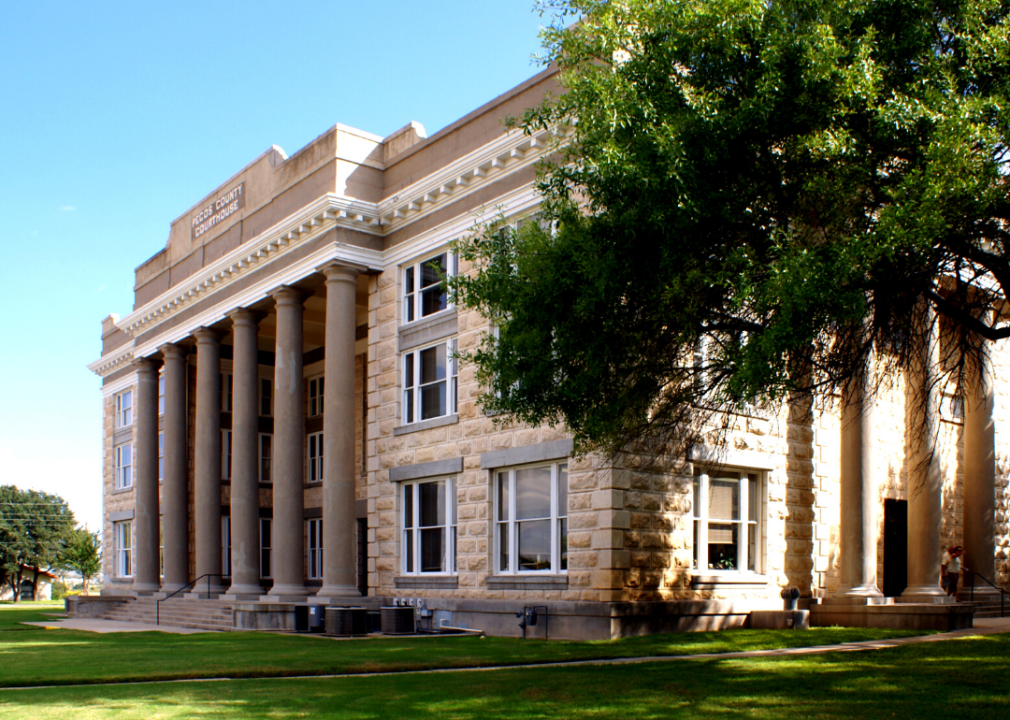
#36. Pecos County (tie)
- Share of 65+ population with Alzheimer's: 13.4% - Number of 65+ population with Alzheimer's: 300 people *These are estimates; actual values have a 95% likelihood of being within 1.7 percentage points—or 50 people—of the estimate.

#35. Upton County
- Share of 65+ population with Alzheimer's: 13.6% - Number of 65+ population with Alzheimer's: 100 people *These are estimates; actual values have a 95% likelihood of being within 1.3 percentage points of the estimate.
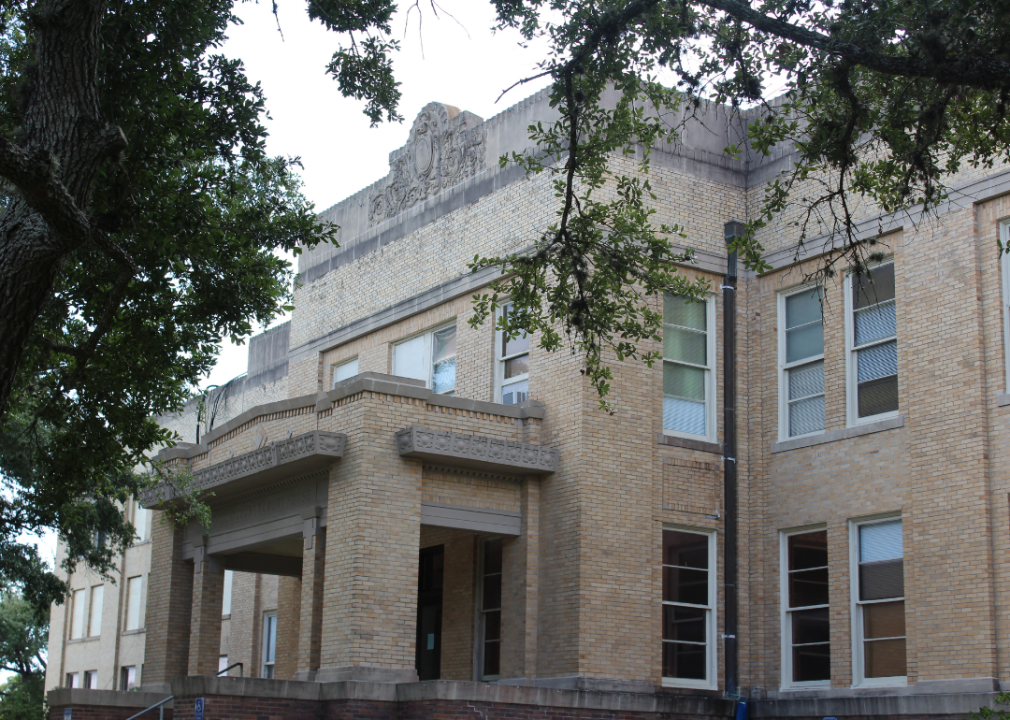
#34. Refugio County
- Share of 65+ population with Alzheimer's: 13.7% - Number of 65+ population with Alzheimer's: 200 people *These are estimates; actual values have a 95% likelihood of being within 1.3 percentage points of the estimate.
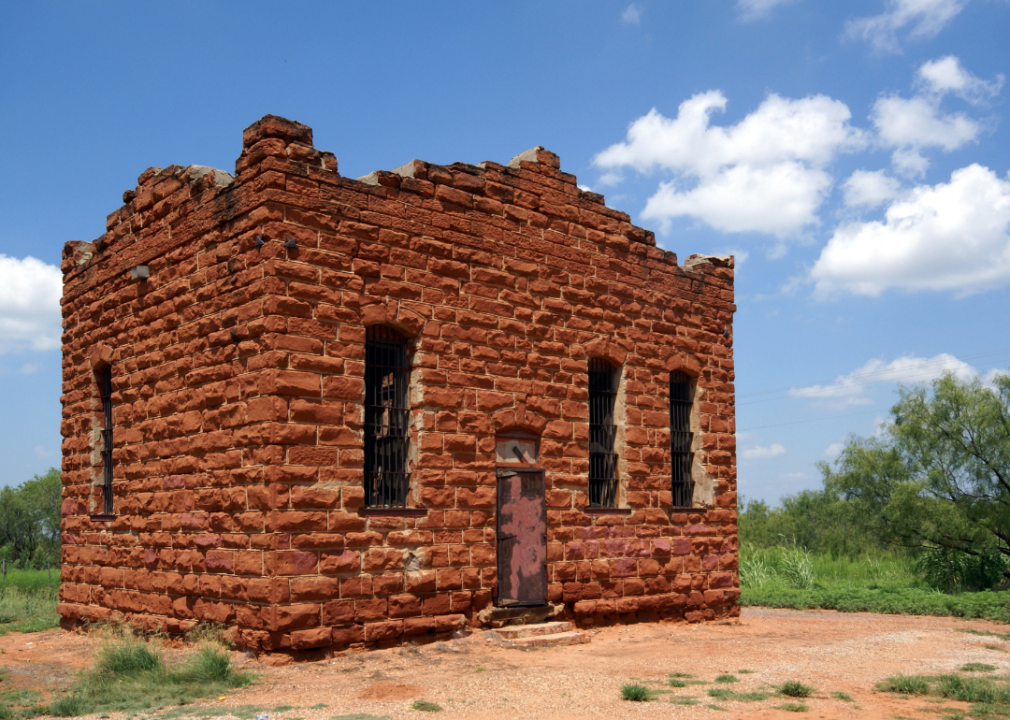
#33. Kent County
- Share of 65+ population with Alzheimer's: 13.8% - Number of 65+ population with Alzheimer's: Not available *These are estimates; actual values have a 95% likelihood of being within 0.9 percentage points of the estimate.
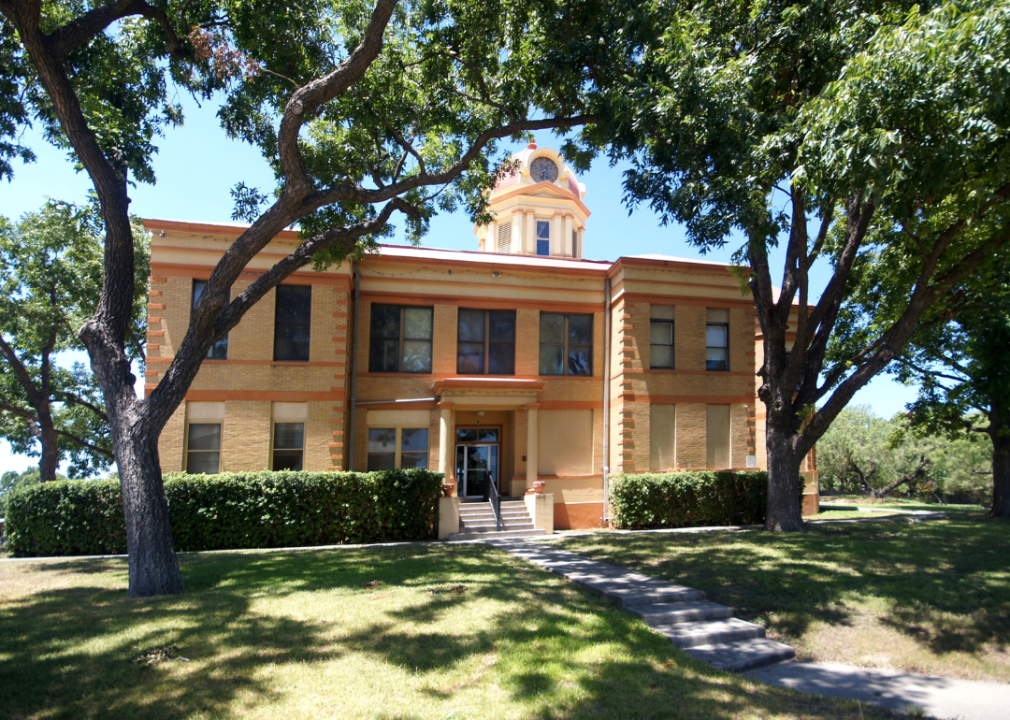
#32. Kinney County
- Share of 65+ population with Alzheimer's: 13.8% - Number of 65+ population with Alzheimer's: 100 people *These are estimates; actual values have a 95% likelihood of being within 1.3 percentage points of the estimate.

#31. Jefferson County
- Share of 65+ population with Alzheimer's: 13.8% - Number of 65+ population with Alzheimer's: 5,200 people *These are estimates; actual values have a 95% likelihood of being within 0.8 percentage points—or 300 people—of the estimate.
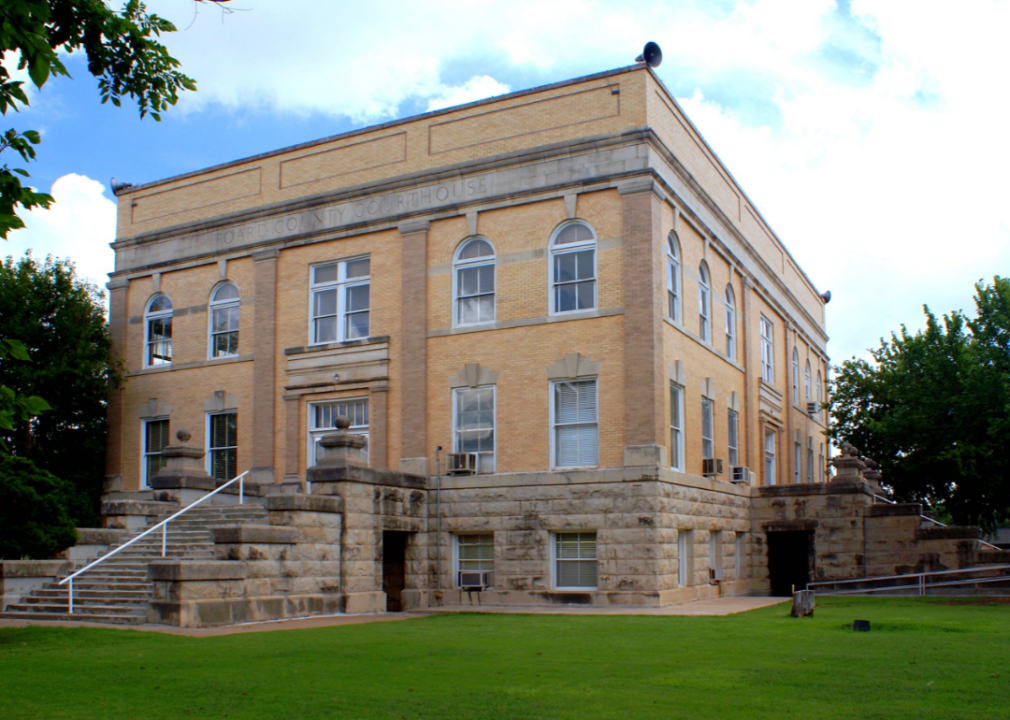
#30. Foard County
- Share of 65+ population with Alzheimer's: 13.9% - Number of 65+ population with Alzheimer's: Not available *These are estimates; actual values have a 95% likelihood of being within 0.8 percentage points of the estimate.

#29. Ward County
- Share of 65+ population with Alzheimer's: 13.9% - Number of 65+ population with Alzheimer's: 200 people *These are estimates; actual values have a 95% likelihood of being within 1.4 percentage points of the estimate.

#28. Uvalde County
- Share of 65+ population with Alzheimer's: 13.9% - Number of 65+ population with Alzheimer's: 600 people *These are estimates; actual values have a 95% likelihood of being within 1.6 percentage points—or 50 people—of the estimate.
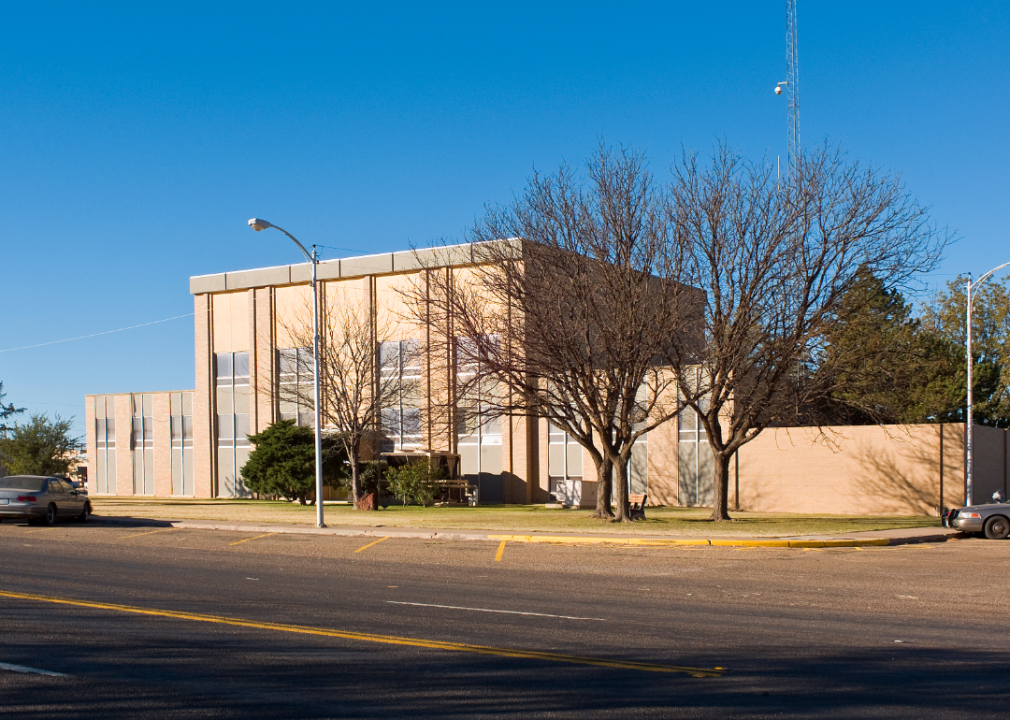
#26. Cochran County (tie)
- Share of 65+ population with Alzheimer's: 14.1% - Number of 65+ population with Alzheimer's: 100 people *These are estimates; actual values have a 95% likelihood of being within 1.4 percentage points of the estimate.
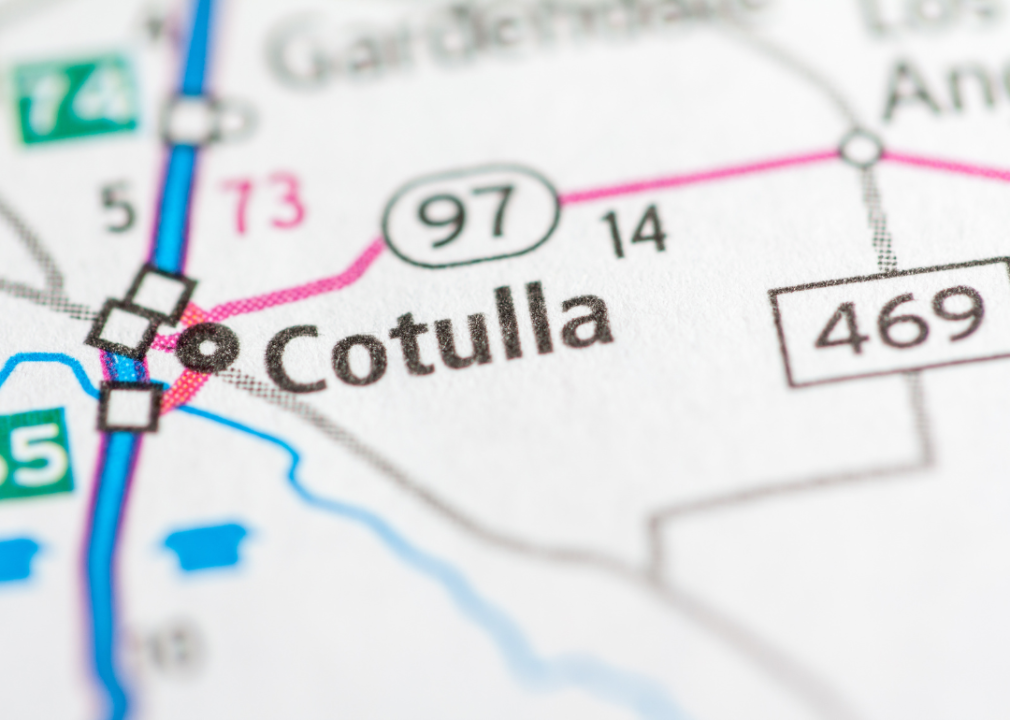
#26. La Salle County (tie)
- Share of 65+ population with Alzheimer's: 14.1% - Number of 65+ population with Alzheimer's: 100 people *These are estimates; actual values have a 95% likelihood of being within 1.9 percentage points—or 50 people—of the estimate.

#25. Terrell County
- Share of 65+ population with Alzheimer's: 14.2% - Number of 65+ population with Alzheimer's: Not available *These are estimates; actual values have a 95% likelihood of being within 1.5 percentage points of the estimate.
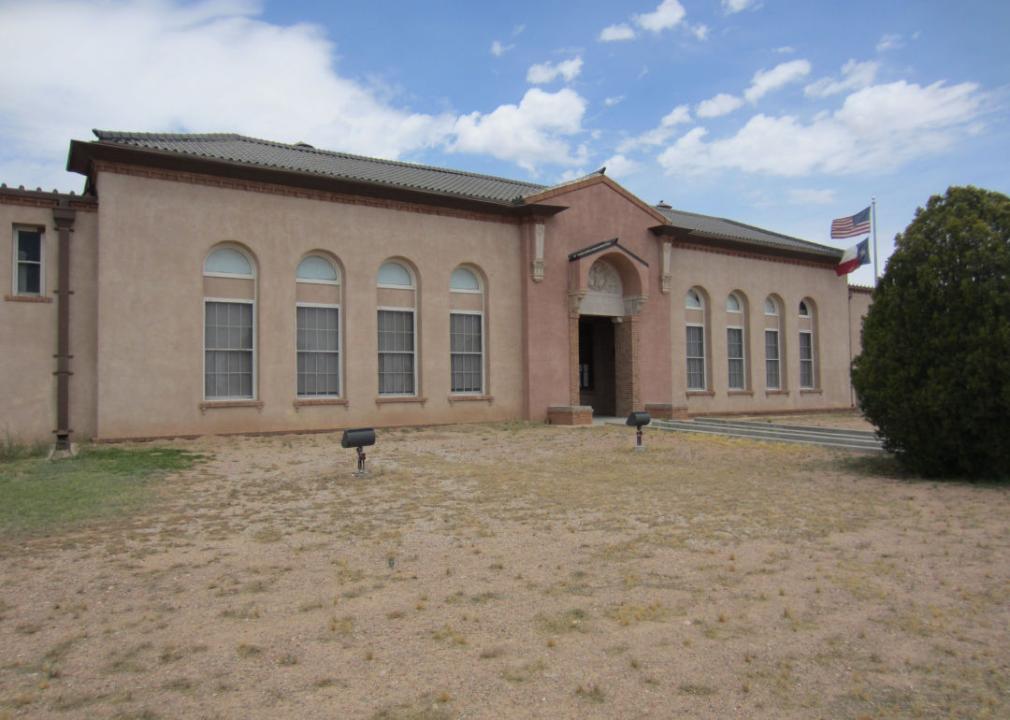
#24. Hudspeth County
- Share of 65+ population with Alzheimer's: 14.3% - Number of 65+ population with Alzheimer's: 100 people *These are estimates; actual values have a 95% likelihood of being within 1.9 percentage points of the estimate.

#23. Jim Hogg County
- Share of 65+ population with Alzheimer's: 14.4% - Number of 65+ population with Alzheimer's: 100 people *These are estimates; actual values have a 95% likelihood of being within 2.2 percentage points of the estimate.
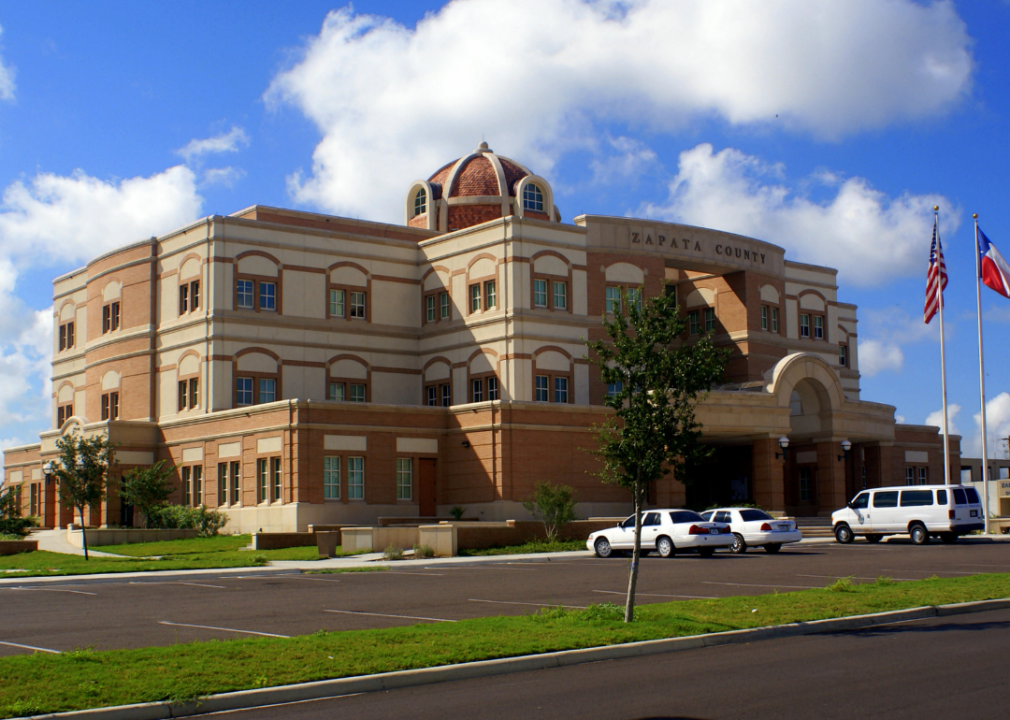
#22. Zapata County
- Share of 65+ population with Alzheimer's: 14.4% - Number of 65+ population with Alzheimer's: 300 people *These are estimates; actual values have a 95% likelihood of being within 2.1 percentage points—or 50 people—of the estimate.
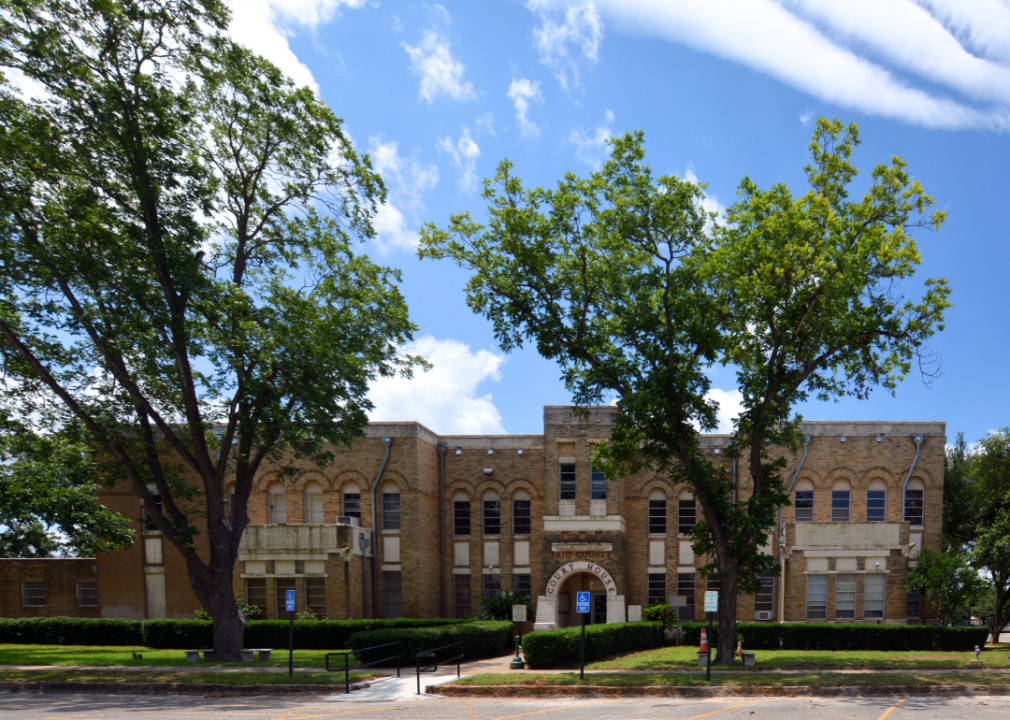
#21. Frio County
- Share of 65+ population with Alzheimer's: 14.4% - Number of 65+ population with Alzheimer's: 400 people *These are estimates; actual values have a 95% likelihood of being within 1.9 percentage points—or 50 people—of the estimate.
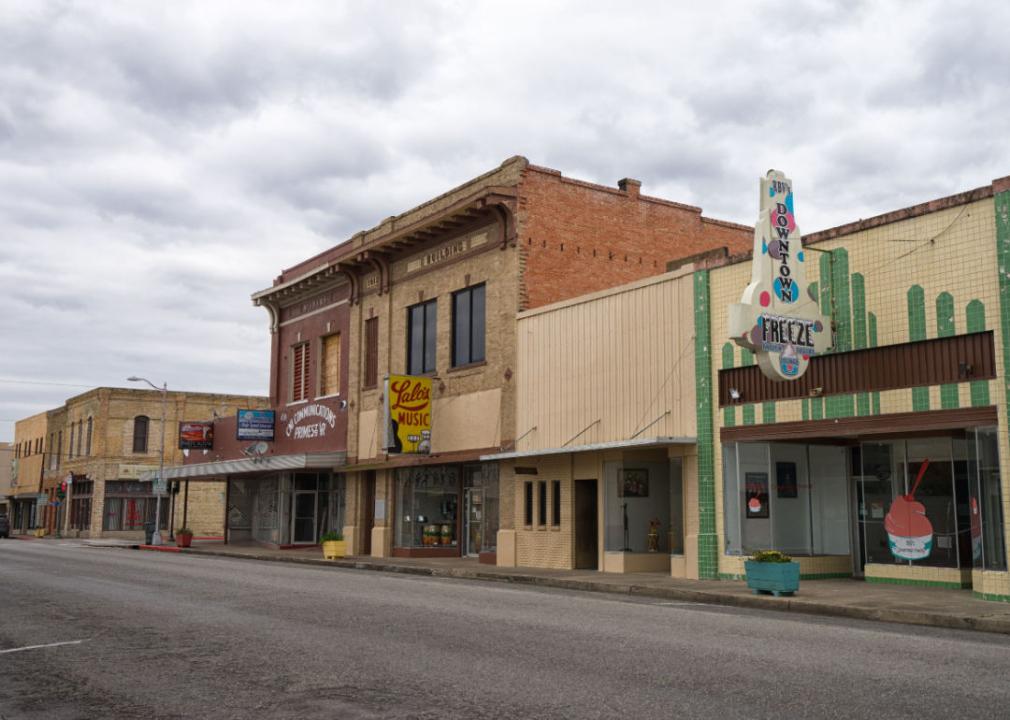
#20. Jim Wells County
- Share of 65+ population with Alzheimer's: 14.4% - Number of 65+ population with Alzheimer's: 900 people *These are estimates; actual values have a 95% likelihood of being within 1.9 percentage points—or 150 people—of the estimate.

#19. Sterling County
- Share of 65+ population with Alzheimer's: 14.5% - Number of 65+ population with Alzheimer's: Not available *These are estimates; actual values have a 95% likelihood of being within 1.2 percentage points of the estimate.
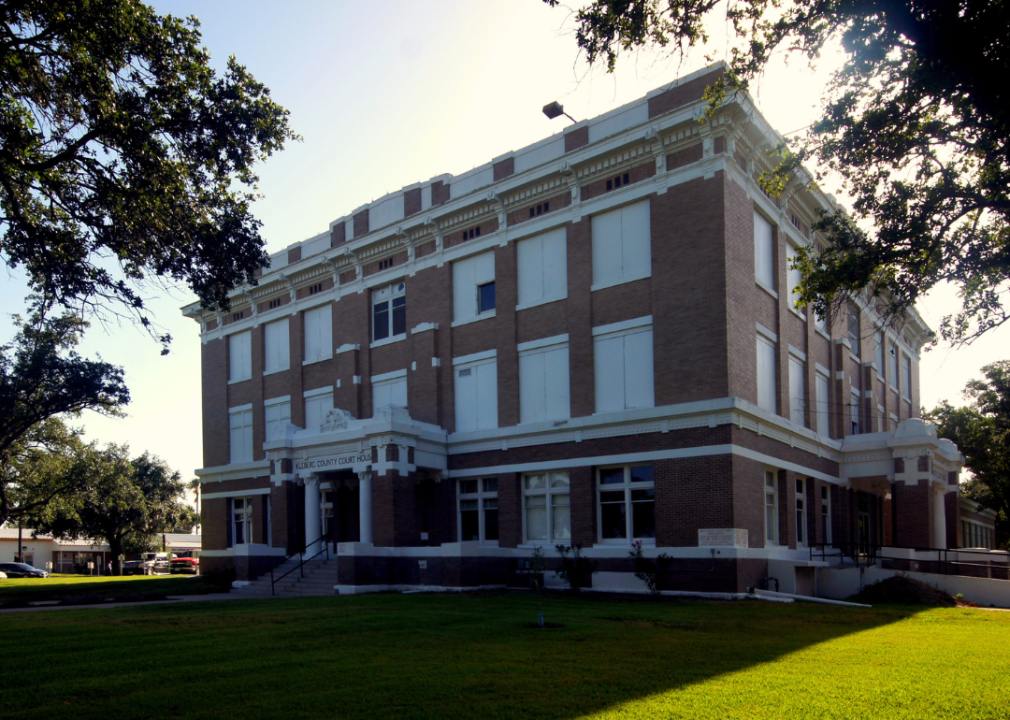
#18. Kleberg County
- Share of 65+ population with Alzheimer's: 14.5% - Number of 65+ population with Alzheimer's: 600 people *These are estimates; actual values have a 95% likelihood of being within 1.8 percentage points—or 100 people—of the estimate.

#17. Cameron County
- Share of 65+ population with Alzheimer's: 14.6% - Number of 65+ population with Alzheimer's: 8,800 people *These are estimates; actual values have a 95% likelihood of being within 2.0 percentage points—or 1,200 people—of the estimate.
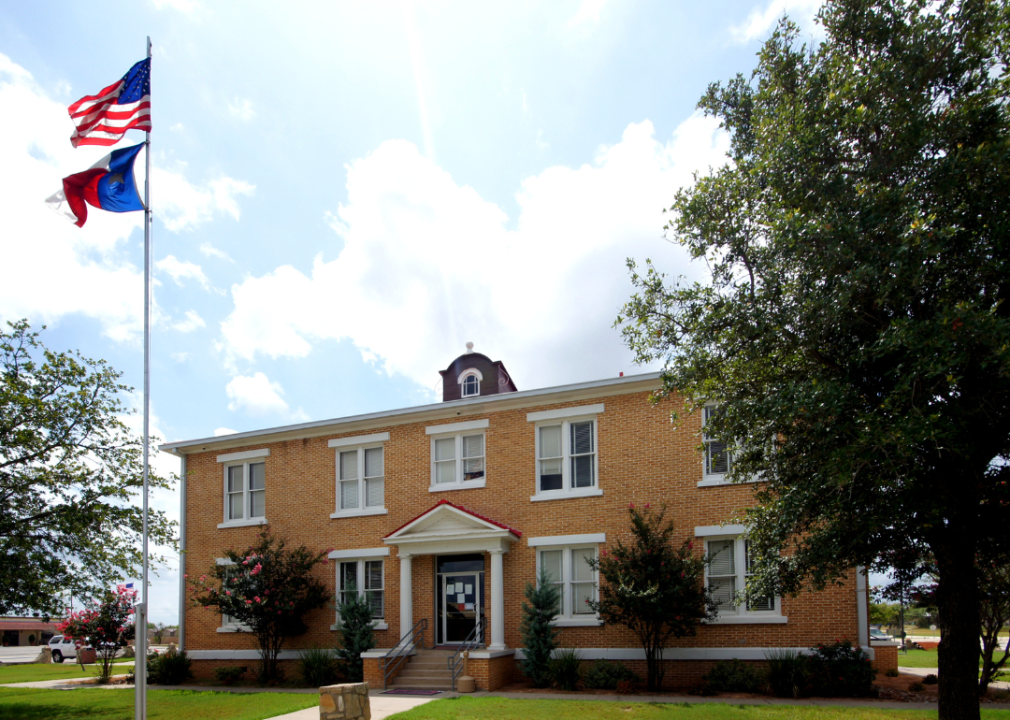
#16. McMullen County
- Share of 65+ population with Alzheimer's: 14.8% - Number of 65+ population with Alzheimer's: Not available *These are estimates; actual values have a 95% likelihood of being within 1.3 percentage points of the estimate.
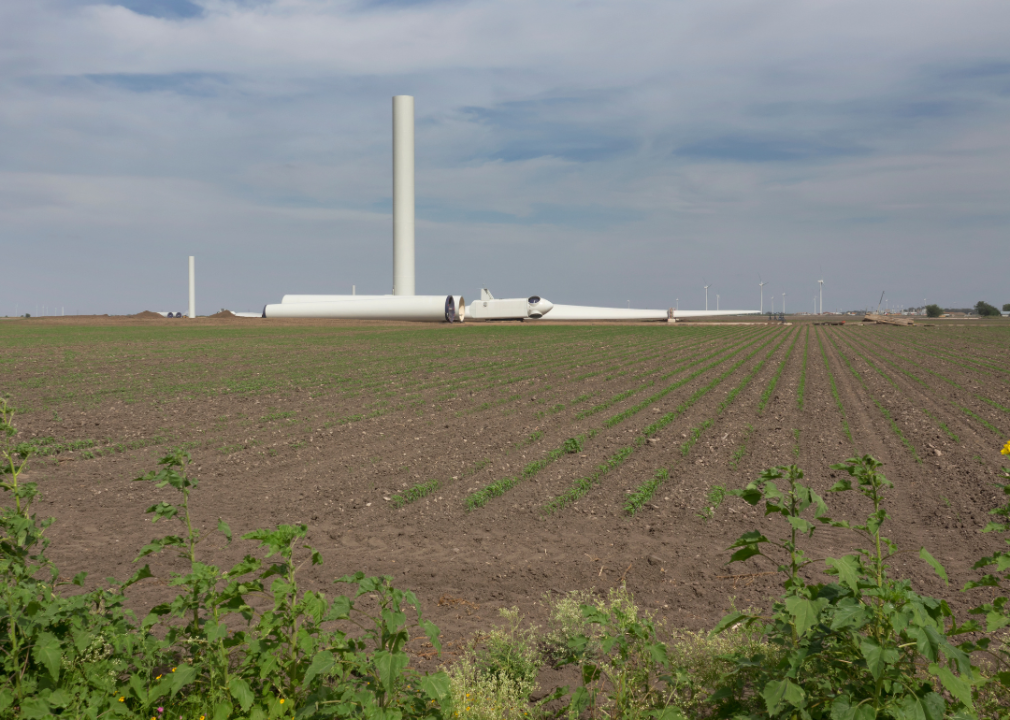
#15. Willacy County
- Share of 65+ population with Alzheimer's: 14.8% - Number of 65+ population with Alzheimer's: 500 people *These are estimates; actual values have a 95% likelihood of being within 2.1 percentage points—or 50 people—of the estimate.

#14. Culberson County
- Share of 65+ population with Alzheimer's: 14.9% - Number of 65+ population with Alzheimer's: 100 people *These are estimates; actual values have a 95% likelihood of being within 1.9 percentage points of the estimate.

#13. Hidalgo County
- Share of 65+ population with Alzheimer's: 14.8% - Number of 65+ population with Alzheimer's: 15,000 people *These are estimates; actual values have a 95% likelihood of being within 2.0 percentage points—or 2,000 people—of the estimate.
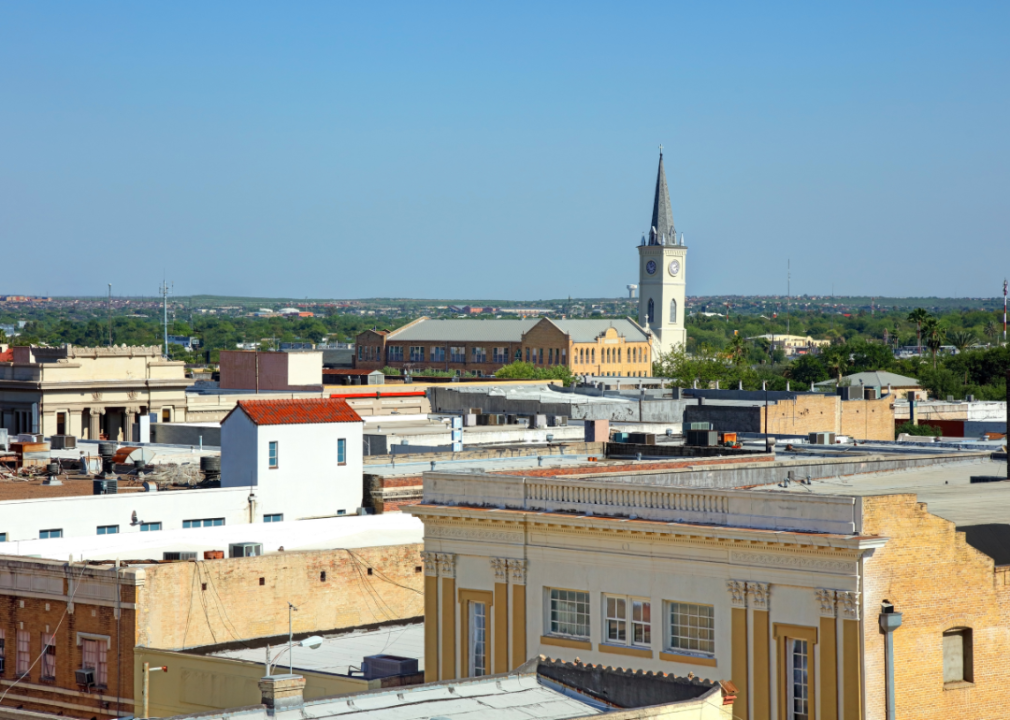
#12. Webb County
- Share of 65+ population with Alzheimer's: 15.0% - Number of 65+ population with Alzheimer's: 4,100 people *These are estimates; actual values have a 95% likelihood of being within 2.3 percentage points—or 650 people—of the estimate.

#11. El Paso County
- Share of 65+ population with Alzheimer's: 15.0% - Number of 65+ population with Alzheimer's: 16,200 people *These are estimates; actual values have a 95% likelihood of being within 2.1 percentage points—or 2,200 people—of the estimate.

#10. Kenedy County
- Share of 65+ population with Alzheimer's: 15.1% - Number of 65+ population with Alzheimer's: Not available *These are estimates; actual values have a 95% likelihood of being within 2.0 percentage points of the estimate.
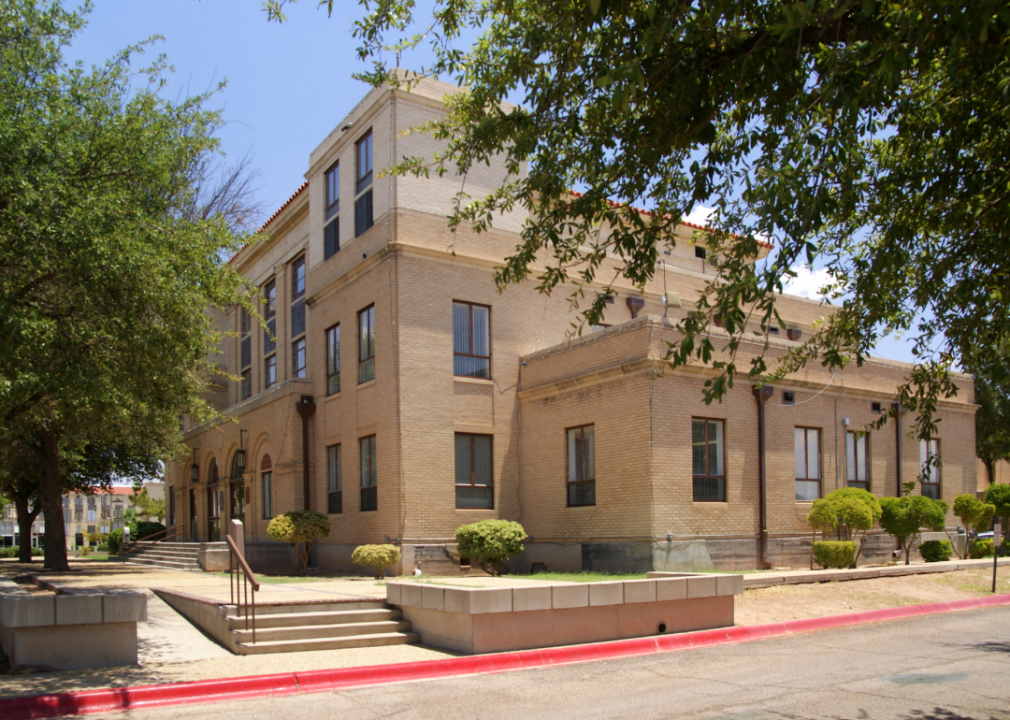
#8. Reeves County (tie)
- Share of 65+ population with Alzheimer's: 15.1% - Number of 65+ population with Alzheimer's: 300 people *These are estimates; actual values have a 95% likelihood of being within 2.0 percentage points—or 50 people—of the estimate.
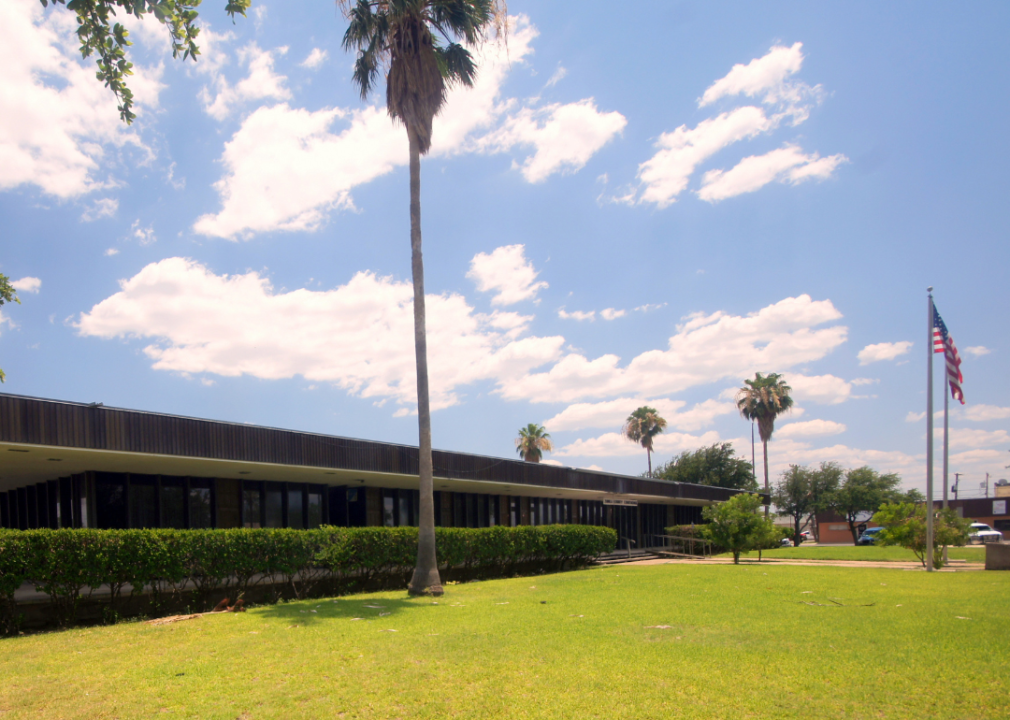
#8. Zavala County (tie)
- Share of 65+ population with Alzheimer's: 15.1% - Number of 65+ population with Alzheimer's: 300 people *These are estimates; actual values have a 95% likelihood of being within 2.3 percentage points—or 50 people—of the estimate.

#7. Maverick County
- Share of 65+ population with Alzheimer's: 15.2% - Number of 65+ population with Alzheimer's: 1,100 people *These are estimates; actual values have a 95% likelihood of being within 2.3 percentage points—or 150 people—of the estimate.

#6. Brooks County
- Share of 65+ population with Alzheimer's: 15.5% - Number of 65+ population with Alzheimer's: 200 people *These are estimates; actual values have a 95% likelihood of being within 2.3 percentage points of the estimate.
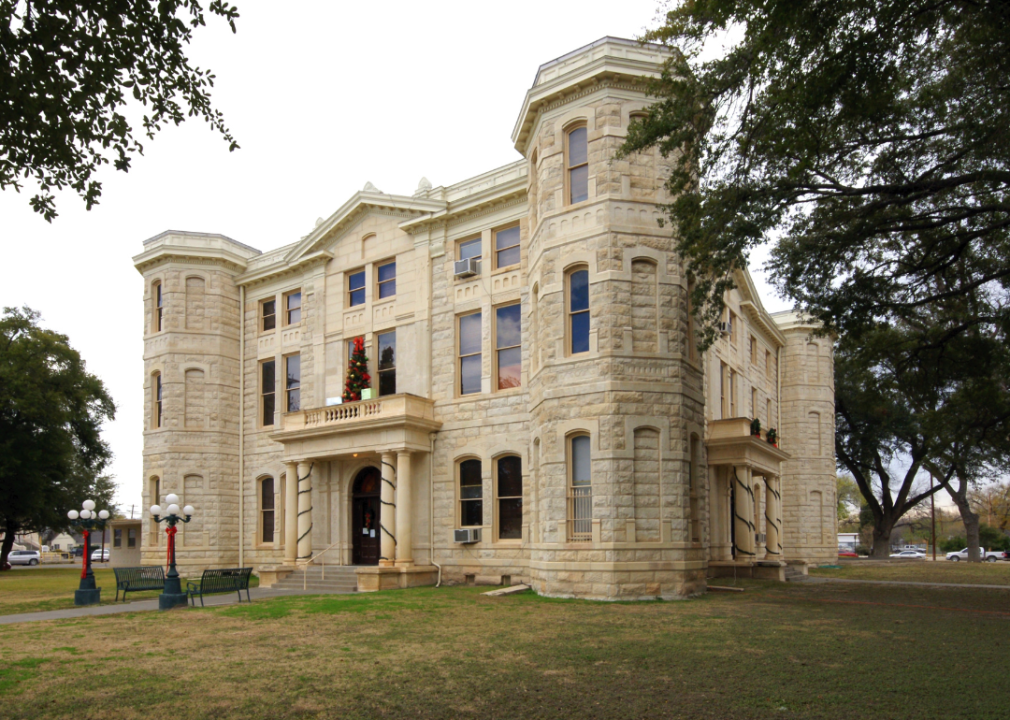
#5. Val Verde County
- Share of 65+ population with Alzheimer's: 15.5% - Number of 65+ population with Alzheimer's: 1,100 people *These are estimates; actual values have a 95% likelihood of being within 2.1 percentage points—or 150 people—of the estimate.
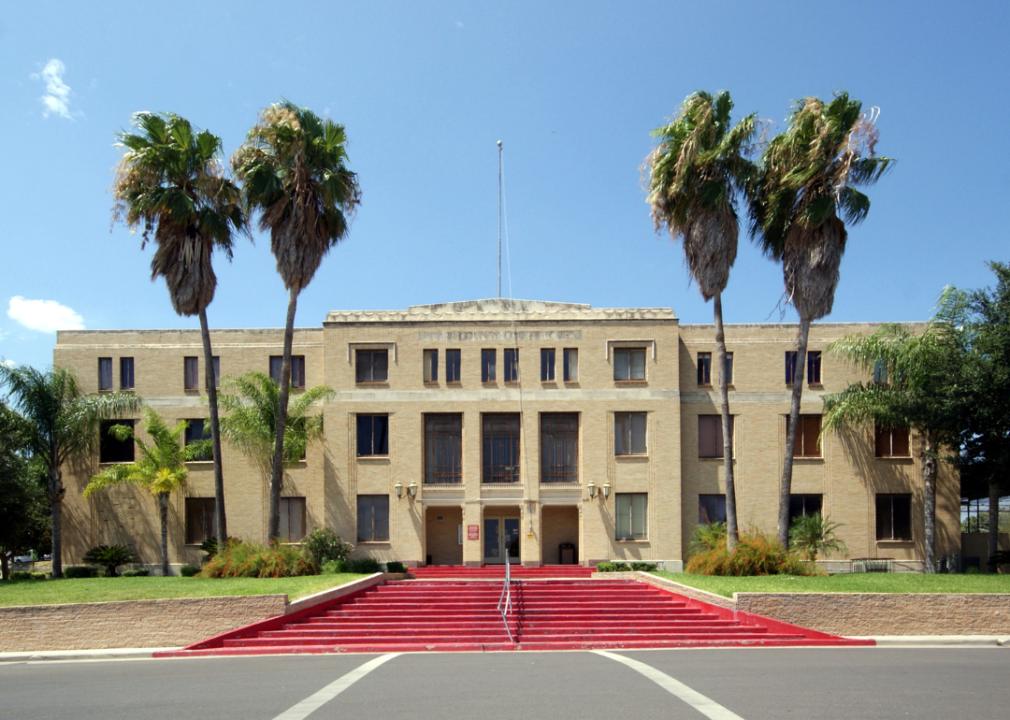
#4. Starr County
- Share of 65+ population with Alzheimer's: 15.5% - Number of 65+ population with Alzheimer's: 1,200 people *These are estimates; actual values have a 95% likelihood of being within 2.3 percentage points—or 150 people—of the estimate.

#3. Dimmit County
- Share of 65+ population with Alzheimer's: 15.6% - Number of 65+ population with Alzheimer's: 300 people *These are estimates; actual values have a 95% likelihood of being within 2.2 percentage points—or 50 people—of the estimate.
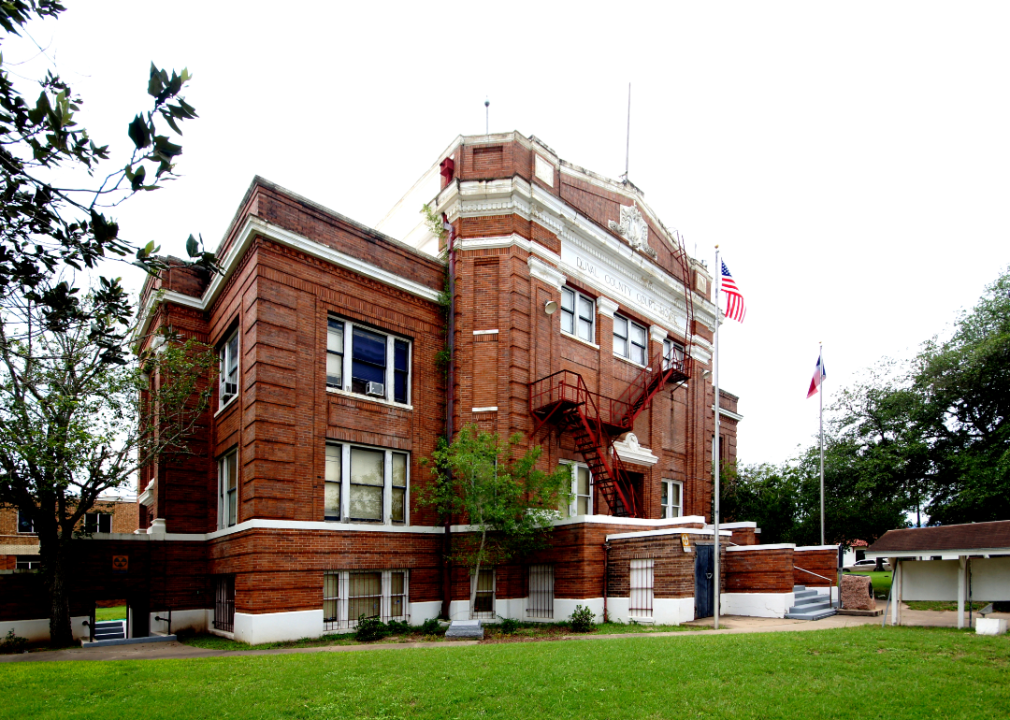
#2. Duval County
- Share of 65+ population with Alzheimer's: 16.0% - Number of 65+ population with Alzheimer's: 300 people *These are estimates; actual values have a 95% likelihood of being within 2.3 percentage points—or 50 people—of the estimate.

#1. Presidio County
- Share of 65+ population with Alzheimer's: 18.4% - Number of 65+ population with Alzheimer's: 300 people *These are estimates; actual values have a 95% likelihood of being within 2.5 percentage points—or 50 people—of the estimate.
This story features data reporting by and writing by Paxtyn Merten and is part of a series utilizing data automation across 50 states.
